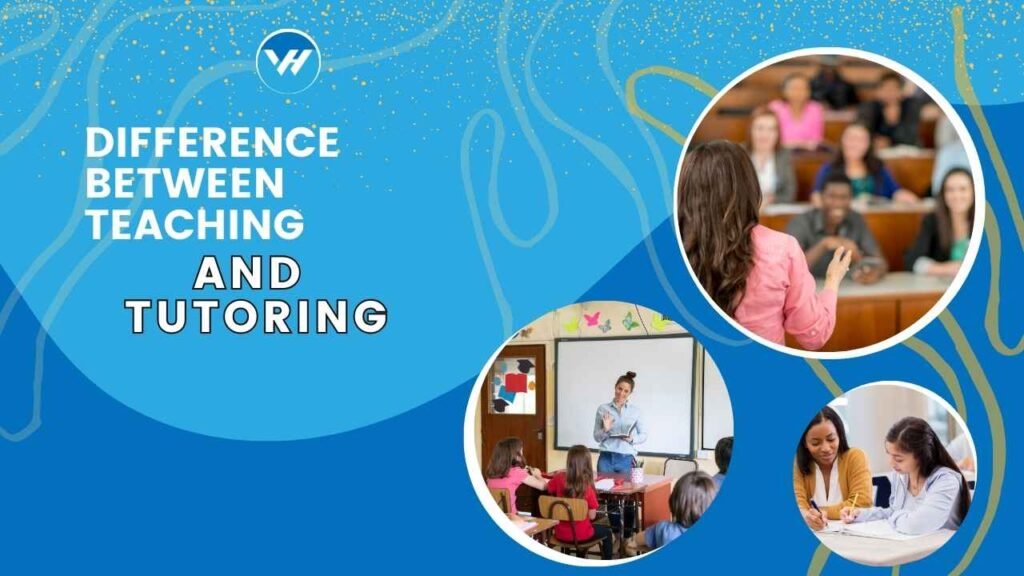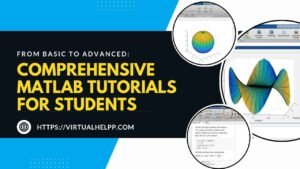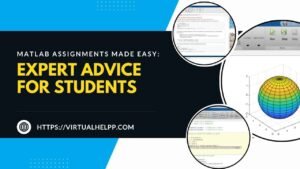Hey there! Ever wondered what sets teaching apart from tutoring? Understanding the differences can really help you make the best educational choices for yourself or your child. Whether you’re a student, parent, or just curious, this guide will clear up the distinctions. And guess what? If you’re looking for some extra help, Virtual Help is here to bridge the gap between teaching and tutoring with ease.

Table of Contents
ToggleDefining Teaching and Tutoring
What is Teaching?
Teaching is a structured form of education where a teacher imparts knowledge to a group of students. This usually happens in schools, colleges, or universities. Teachers follow a standardized curriculum designed to meet educational standards.
What is Tutoring?
Tutoring, on the other hand, is a more personalized form of instruction. A tutor works one-on-one or with small groups, tailoring lessons to the specific needs of the student. This can happen in various settings, from homes to online platforms.
Qualifications and Requirements
Qualifications for Teachers
Teachers typically need to have professional licensure and qualifications. This includes a degree in education and passing certification exams. They are trained to handle large classrooms and adhere to educational standards.
Qualifications for Tutors
Tutors, however, aren’t always required to have formal teaching qualifications. Many tutors are experts in specific subjects and have a passion for teaching. Some teachers also work as tutors outside their regular job to supplement their income.
Teaching vs. Tutoring: Key Differences
Class Size and Individual Attention
One of the biggest differences is class size. Teachers usually handle large groups of students, which can limit individual attention. Tutors focus on one or a few students at a time, allowing for more personalized instruction.
Standardized Curriculum vs. Personalized Learning
Teachers follow a set curriculum with specific timelines. Tutors, however, can adapt their lessons to fit the student’s learning style and pace, making learning more flexible and tailored.
Approach and Methodology
Teaching Methods in Classrooms
In classrooms, teachers often use a one-size-fits-all approach. They employ various methods like lectures, group work, and standardized testing to ensure all students meet the required competencies.
Tutoring Methods and Flexibility
Tutors are more flexible in their approach. They can use different teaching methods, such as interactive activities and real-life examples, to match the student’s needs and interests.
Role and Responsibilities
Teacher’s Responsibilities
Teachers are responsible for managing a classroom, creating lesson plans, and evaluating student performance. They also have to meet educational standards and prepare students for exams.
Tutor’s Responsibilities
Tutors focus on helping students understand specific subjects or skills. Their main responsibility is to provide personalized support and address individual learning gaps.
Student Engagement and Interaction
Engagement in Classroom Settings
In a classroom setting, student engagement can vary. Teachers use various strategies to keep students interested, but with large classes, it’s challenging to ensure everyone is equally engaged.
Engagement in Tutoring Sessions
Tutoring sessions are more interactive and engaging. Tutors can focus on the student’s interests and use personalized techniques to keep them motivated and involved.
Impact on Student Learning
How Teachers Influence Learning
Teachers lay the foundation for student learning by covering a broad curriculum. They introduce students to various subjects and help them develop essential skills.
How Tutors Influence Learning
Tutors reinforce what students learn in the classroom and help them master difficult concepts. They provide targeted support, which can lead to significant improvements in understanding and performance.
Supplementing Education
Teachers as Tutors
Many teachers also work as tutors. This allows them to provide additional support to students outside the classroom, reinforcing what they teach during school hours.
Benefits of Combining Teaching and Tutoring
Combining teaching and tutoring can be highly beneficial. Students get the best of both worlds: a solid educational foundation from teachers and personalized support from tutors.
Time and Availability
Teacher’s Schedule
Teachers have a fixed schedule, often during school hours. Their availability outside of these hours can be limited.
Tutor’s Schedule and Flexibility
Tutors offer more flexibility. They can work around the student’s schedule, providing support when it’s most convenient.
Cost and Accessibility
Cost of Hiring Teachers
Hiring a teacher, especially for private lessons, can be expensive. This is due to their qualifications and the structured nature of their teaching.
Cost of Hiring Tutors
Tutors can be more affordable and accessible. Since they often don’t require formal qualifications, the cost of hiring a tutor is usually lower.
Virtual Help: Bridging the Gap
How Virtual Help Can Assist
Virtual Help is an amazing platform that connects students with qualified tutors and teachers. Whether you need help with a specific subject or general academic support, Virtual Help has got you covered.
Finding Tutors and Teachers on Virtual Help
With Virtual Help, finding the right tutor or teacher is a breeze. You can browse profiles, read reviews, and choose someone who fits your learning style and needs.
Choosing Between a Teacher and a Tutor
When to Opt for a Teacher
Choose a teacher if you need structured learning, adherence to a curriculum, and preparation for standardized exams.
When to Opt for a Tutor
Opt for a tutor if you need personalized support, help with specific subjects, or flexible scheduling to fit your busy life.
Conclusion
Teaching and tutoring both play vital roles in education, each with its unique benefits. While teachers provide a broad educational foundation, tutors offer personalized support to help students excel. If you’re looking for the perfect blend of both, check out Virtual Help. It’s a fantastic resource to find the right educational support for your needs.
FAQs
What makes a good tutor?
A good tutor is patient, knowledgeable, and able to adapt their teaching style to meet the student’s needs. They should also be encouraging and provide constructive feedback.
Can teachers be good tutors?
Absolutely! Teachers often make excellent tutors because they have a deep understanding of educational principles and experience working with students.
How can Virtual Help enhance my learning experience?
Virtual Help connects you with qualified tutors and teachers who can provide personalized support, flexible scheduling, and a wide range of subjects to help you succeed.
What should I look for when choosing a tutor?
Look for someone with expertise in the subject you need help with, good reviews from other students, and a teaching style that matches your learning preferences.
How often should tutoring sessions be scheduled?
The frequency of tutoring sessions depends on your needs and goals. Some students benefit from weekly sessions, while others may need more frequent support, especially before exams or deadlines.





